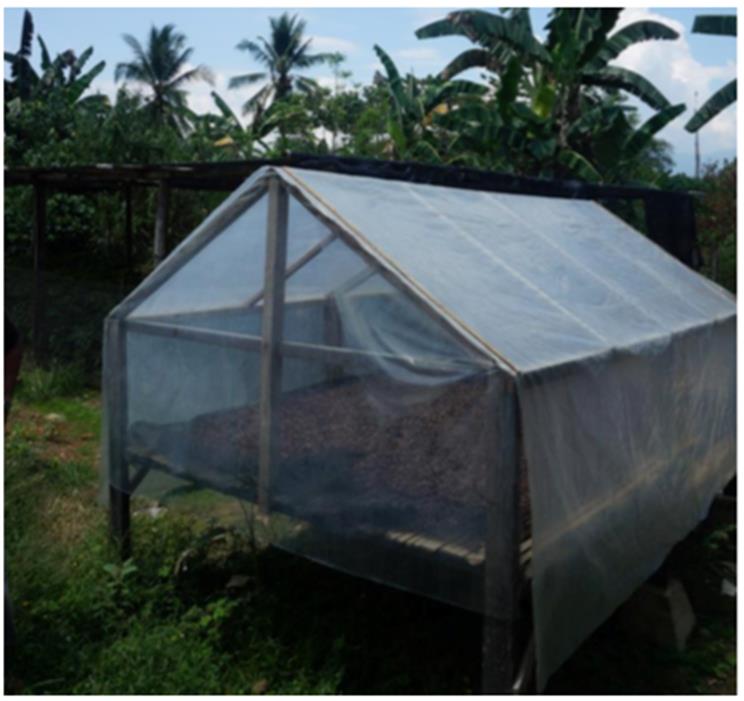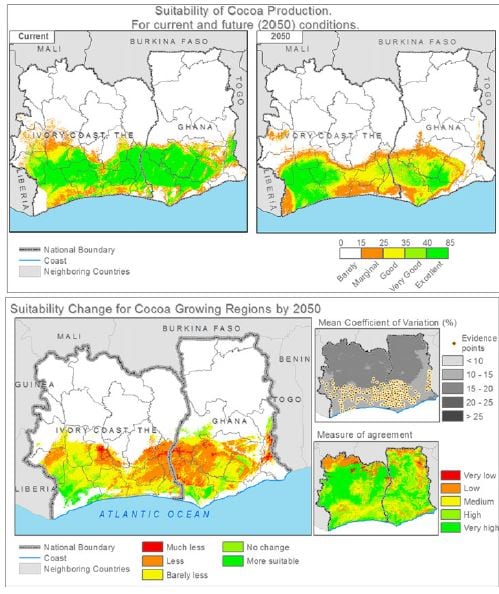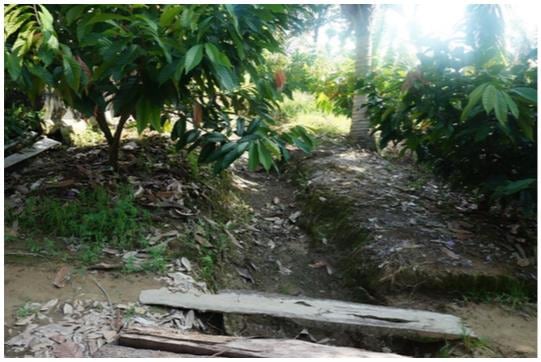The certification organization says companies such as Nestlé, Mars and Barry Callebaut were present at United Nations’ recent COP21 conference in Paris and acknowledge climate change’s harsh impact on agricultural crops.
However, it says scaled-up efforts are needed as many cocoa farmers’ yields have already plummeted.
‘Billions of livelihoods dependent on it’
Martin Noponen, senior manager on climate for Rainforest Alliance, told ConfectioneryNews: “It something no-one should be ignoring… a much greater emphasis needs to be placed on reducing the impact at smallholder farmer level. There’s billions of livelihoods dependent on it.”
He said the effects rang true during a recent trip to Indonesia when he spoke to smallerholder farmers who have been growing cocoa for the past 15 years.

“The impact has been devastating… many farmers’ yields have halved,” said Noponen. “Over the last 10 years there were hardly any problems – no major disease. That has drastically changed after long periods of drought.”
Drought in Indonesia has led to higher seed mortality and higher mortality for younger trees that are vulnerable to diseases like cocoa pod borer, he said.
“They’ve had much higher rainfalls too, which has led to landslides, depletion of top soil and it also affects the flowering of the cocoa,” the Rainforest Alliance manger said.
Fermentation and drying cocoa beans is also far harder and the beans are susceptible to mold growth.
Impact in Ghana and Côte D’Ivoire
“The impact has been felt across the board – it’s the same scenario in Côte D’Ivoire, Ghana and Ecuador,” said Noponen.
A 2013 paper published by the International Center for Tropical Agriculture (CIAT), in the journal Climatic Change said vast areas of the world’s two top cocoa growers Ghana and Côte D’Ivoire will become less suitable for cocoa production as global temperatures climb by up to 2°C by 2050.

Noponen said the effects would be felt hardest in Ghana where there is limited shade and where much of the tree stock is over 30 years old – far beyond the ages when the trees are at their most productive (four to 12 years).
CIAT is currently updating its study as more data has become available and is likely to downgrade the severity in a publication due next year.
“They are not quite as bad as they used to be – but still a large impact,” said Noponen.
Fewer impact models are available for Asia and Latin America. Rainforest Alliance is currently analyzing the impact for the world’s third largest cocoa grower, Indonesia, but has yet to yield results.
But Noponen said: “The realities on the ground already make clear what is happening and what the impacts are.”
Reducing the impact: Climate-smart approach

Rainforest Alliance says the cocoa and chocolate industry can mitigate the impact of climate change on cocoa with climate-smart agriculture.
The organization’s climate-smart agriculture program is focused on sustainably intensifying cocoa production or making current trees more resistant to climate change.
Noponen said climate-smart agriculture was already part of many cocoa and chocolate industry programs. But he said the difference was that Rainforest Alliance assesses risks and takes corrective action based on local needs.
For example, it may work with cocoa farmers in low lying areas in Ghana that suffer from flash floods to enhance soil structure to improve water filtration.
In other communities it may support cocoa drying using solar panels or may entirely rehabilitate certain cocoa areas – all of which require financing and industry backing.
Noponen urged the chocolate and cocoa industry to pre-competitively share any local risks identified in their programs and adaption strategies to help smallholder farmers.
He urged the industry to scale up efforts. “It will be more costly five years down the line… there will definitely be a reduction in cocoa yields.”
